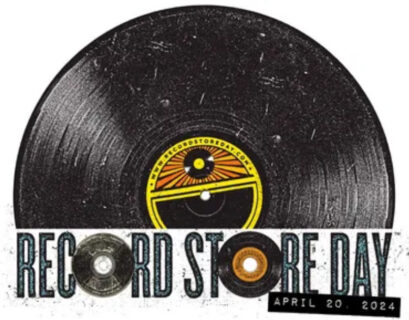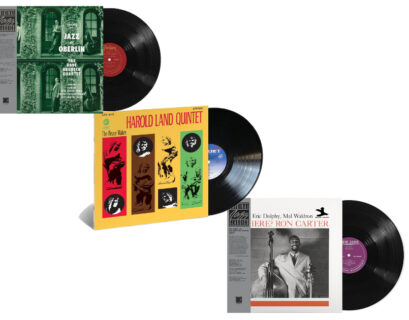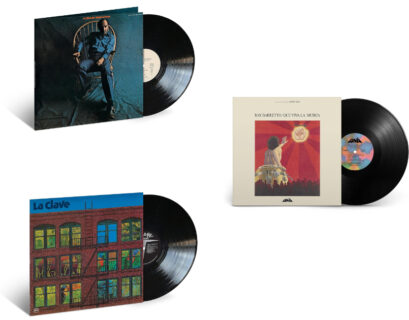It’s the time of year for saving money!
Finding good sounding clean originals of Charles Mingus’ early recordings from the 1950s and 1960s isn’t easy, especially these days. But some albums are remarkably elusive, such as his recordings for Bethlehem Records. Sure they are on digital platforms and CDs, some of which I’ve had for a long time. A number of years ago I found a “gray market” copy of a particularly hard-to-find late ‘50s release which I picked up cheaply but never really liked how it sounded. It felt very obviously like it was made from a low quality digital source.
Then about a year ago at a record swap meet — the Down Home Music Parking Lot sale in El Cerrito just north of Berkeley, for those of you who come to the San Francisco Bay Area — I had a stroke of good luck. A seller there was parting with an original Mono copy of this rare wonder, A Modern Jazz Symposium Of Music and Poetry With Charlie Mingus for just three dollars! I was almost afraid to look at the condition of the vinyl and just buy it blindly but I did look. And it was indeed scary looking but I took a chance on it anyhow, the album’s cover scotch-taped together and super dirty vinyl showing the evidence of an album well loved and appreciated over time (more cynical collectors might call this a “played to death” or “trashed” copy but I had higher hopes…).
A Modern Jazz Symposium Of Music and Poetry With Charlie Mingus is one of those records that rarely pops up anywhere and this was the first time I’d seen a copy out in the wilds. I took it home, gave it a few washings and was pleased to see that it was cleaning up pretty well — it was very very dirty! — but the vinyl was shiny and looked like it would be playable. Save for, however, the opening grooves on side one which looked especially scary-awful, like someone might have dragged a screwdriver across the grooves (or more likely it was played on a record player with a heavy, poorly aligned tone-arm.
Gingerly, I lowered the stylus of my least expensive cartridge (a Grado Black) to the grooves to see what might happen. Wonder of wonders — and miracle of miracles! — the record played through normally, without any skipping or the wooshing sounds I anticipated. I was amazed! As it turned out the whole album sounded pretty good, even great at times even on Side Two… The disc sounded even better using my Mono cartridge ultimately.
So I sat back to listen and bask in Mingus’ music and for the first time, I felt I was hearing and connecting with this recording. I could feel Mingus’ presence on these grooves — clearly this was a passionate project for him.
Especially in that opening track, “Scenes In The City” he presents a sort of gritty street-weary, beat poetry and jazz flipside twist on Gordon Jenkins’ classic 1940s ultra-kitsch glitzy early audio documentary concept album, Manhattan Tower, Mingus’ take presents a day in the life of a struggling Jazz musician. Here in stead of basking in the radiance of a glorious city high rise like Jenkins’ star, Mingus’ characater is barely making ends meet financially, living in a tiny room with a shared bathroom in a walk up way uptown in Harlem, far from the downtown glories of Manhattan’s jazz scene. After a few listens you realize this isn’t just a story Mingus has woven randomly and that it is probably closer to the truth than any of us would care to believe as an artist of such stature (he was eventually dramatically evicted from his apartment in the mid 60s!).
Working through Nat Hentoff’s copious liner notes on the back of the album, we learn that the narration here was performed by actor Mel Stewart and the script was conceived and written by Pulitzer Prize and Academy Award nominated African-American actor, playwright and screenwriter Lonnie Elders with help from acclaimed Jazz poet Langston Hughes. Together, they capture Mingus’ essence to the point where (before reading the liner notes closely ) I initially thought Mingus was doing the talking! It feels like Mingus!
Side Two is almost the perfect triptych, delivering “New York Sketchbook,” followed by the gorgeous “Duke’s Choice” — with an amazing trumpet solo by Clarence Shaw — and then driving home the Be Bop bliss in a smoker called “Slippers” which feels like a pre-echo of Coltrane’s “Countdown” and “Giant Steps.”
So why was such a great album so out of print for years in a legitimate form? I don’t know but I imagine it is some combination of issues regarding ownership of the recordings, locating the original tapes, finding the funds to license said recordings for reissue and then of course hiring great mastering engineers, restoring the tapes, finding original cover art elements (and updating them accordingly for modern distribution needs) and then of course pressing the discs themselves. There are a lot of moving parts to this process of putting out a record!!!
That said, New Land has done a fairly exemplary job on this reissue of A Modern Jazz Symposium Of Music and Poetry With Charlie Mingus. From their website we learn that “the recordings have been remastered from the original tape transfers and lacquers cut by Kevin Gray.” The recordings — officially licensed from BMG, owners of the Bethlehem Records catalog at present, and approved by the Charles Mingus estate — sound very good, excellent even.
But some of you may be wondering whether they were remastered in an “all analog” process. That part is admittedly unclear here. Recent language I’ve been seeing coming through in press releases from a variety of entities use vague language like “remastered from original tape transfers” which — and I am guessing here, folks — seems to imply that the remaster were made from a copy of the original tape. Whether the “transfer” was made to a digital platform (likely) or analog (possible but with a generation of signal loss, so less likely) is to be determined.
All that said, A Modern Jazz Symposium Of Music and Poetry With Charlie Mingus still sounds very very nice with a warm finish to the music that allows me to turn up the volume on my amplifier without that ear-piercing crunch of a poor digital transfer or bad mastering. So kudos to the reissue’s producers and mastering engineer Kevin Gray for ensuring that this album sounds as good as it can.
In contrast, my earlier “grey market” unofficial release (on the Doxy label) sounds harsh, at times even a bit pulse-y as if too much compression or noise reduction was applied. It is generally a not especially enjoyable listen and I’ll be glad to finally purge this copy from my collection now that I have a much better version!
Please note that the original Stereo tapes do have some drop outs in them so don’t be surprised if you hear moments of audio oddness. It might be a wrinkled tape source or perhaps an edit “splice” that was in need of restoration. They are apparent in both the Doxy and new editions (but neither are major problems… this is just a heads up for some of you who, like me, notice fine details like that).
You will want to turn up the volume on this album at times. Even the bonus tracks smoke, notably the jam on the classic Charlie Parker tune “Billie’s Bounce” which is taken at a pace that might have even made Bird break a bit of sweat.
I have to offer some kudos to the producers for the cover art and how it was all presented here. Expanded to a gatefold sleeve, the packaging for this reissue of A Modern Jazz Symposium Of Music and Poetry With Charlie Mingus features a “reverse-board” flat-matte type finish which looks very nice (although it is different than the original pressings which were more of the tip-on style, printed on glossy stock). The new 180-gram albums were pressed at Pallas in Germany and the discs come in nice black plastic-lined audiophile grade inner sleeves. My copies were not completely flat but the very slight warp didn’t affect play at all. More importantly (for me at least) is the fact that the discs are all well centered and very quiet so the noise floor pretty much disappears.
Also, I was very pleased about the plastic outer bag the album comes in. It is not the typical loose-ish polybag (as you might get on an Acoustic Sounds or Tone Poet reissue) nor is the super thin fragile Japanese plastic sleeves (which I am not a fan of as they are difficult to open and reseal, the paper-inner-sleeved albums often get stuck against the sticky glue under the flap which always snaps down as you try to put the thing away… grumble grumble… I really dislike those sleeves!).
Instead, A Modern Jazz Symposium Of Music and Poetry With Charlie Mingus comes to you wrapped in a slightly heavier, almost vinyl-like plastic bag that is quite sturdy and easily resealable — the flap stays open without hassle so it is simple to remove and replace the cover without it getting stuck in the not-super-sticky glue. I really appreciate these bags and its the first time I’ve seen them — I might try to track down where they are made as I’d like to get some, perhaps for my rarest albums.
A Modern Jazz Symposium Of Music and Poetry With Charlie Mingus is a fabulous album which stands tall alongside Mingus’ other classics from this period such as The Clown, Tijuana Moods and Mingus Three. The fantastic band includes the great Jimmy Knepper (trombone), Shafi Hadi (tenor and alto sax), Bill Hardman and Clarence Shaw (trumpet), Horace Parlan and Bob Hammer (piano) and long time Mingus drummer, Dannie Richmond, still early on in their musical relationship but already wed at the rhythmic hip (Mingus even says in the liner notes “I’d rather not use a drummer if he weren’t available”).
If you like Mingus and haven’t been able to hear this album in good quality, this pressing of A Modern Jazz Symposium Of Music and Poetry With Charlie Mingus is a must get. It is selling for a very fairly priced $32 on Amazon (which you can order from at the link embedded in the title throughout this review). Essential listening for Mingus fans. Grab it now while you can.




















